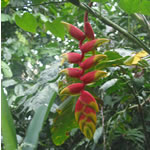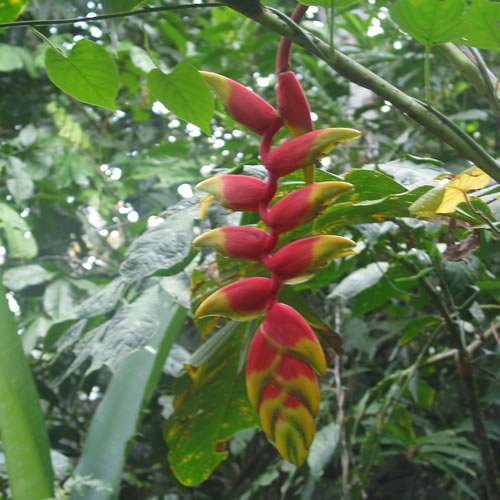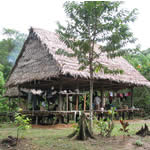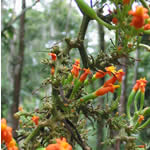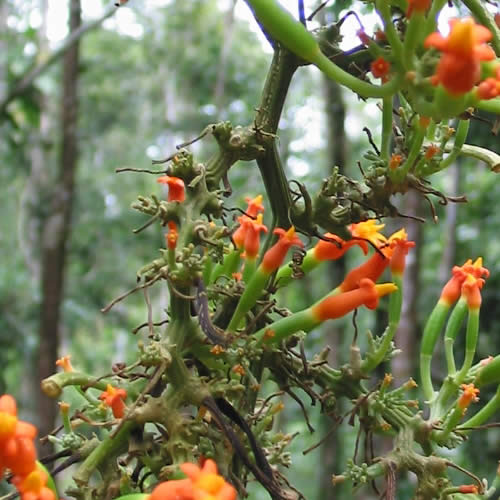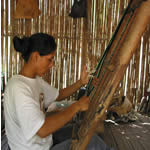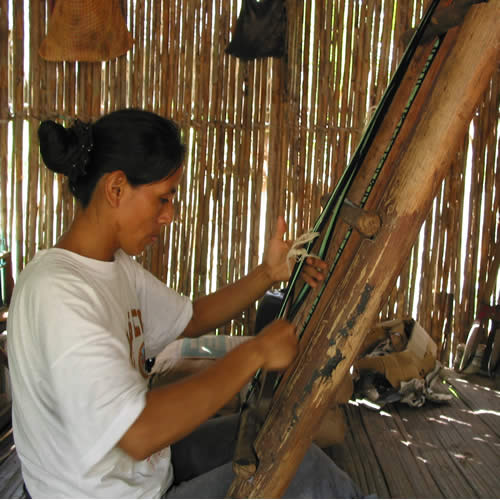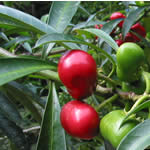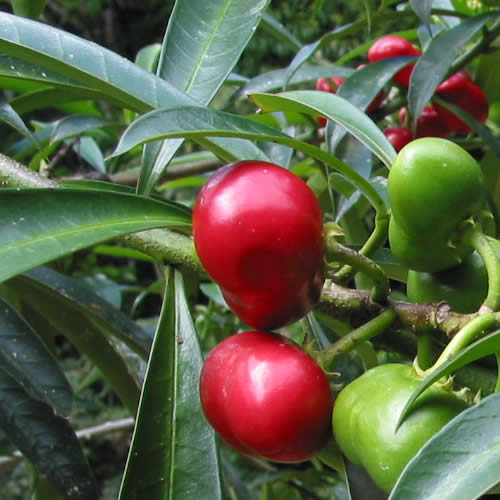History of the Reserve
In 1997 the people of Triunfo voted unanimously to establish a forest reserve on the community's land. This decision was made with an awareness of the importance of conserving natural resources for future generations of the community, and the possibility of welcoming visitors as a means of generating income in a sustainable way. The reserve was made up of a series of 40 hectare plots which had not yet been allocated to individual members and in total covered over 600 hectares of primary forest. In order to complete the establishment of the reserve, the boundaries were demarcated by the an official surveyor and land titles were registered.
In order to enable visits to the reserve by tourists, trails were opened, bridges were made and a traditional house was built using communal labour. Over time the reserve was expanded with the addition of eight 40 hectare plots until it reached the boundaries of the community's land. In 2003 Gilber Chufandama Tapullima approached the Ministry of Agriculture with a view to continue the expansion of the reserve into the State owned forest which lay beyond the reserves boundaries. Gilber was succesful in gaining the support of INRENA (Office of Natural Resources) and in 2004 a further 5000 hectares were added to the reserve. In November 2004 an application was made to add a further 5000 hectares to the reserve, this would extend the boundaries all the way to the Nanay river. This application has been received favorably by INRENA.
For the past 2 centuries the area of the Yakumamay reserve was protected from exploitation by its distance from the Nanay and Itaya rivers and the absence of any road access. In 1997 work began on the construction of a highway to connect the cities of Iquitos and Nauta, this opened up the surrounding forests to exploitation by settlers. The abundant wildlife that the first settlers encountered has been affected by hunting and slash and burn agriculture along the new road but it persists in the hinterland. As a result, given the proximity to Iquitos there is an unexpected diversity of flora and fauna in the reserve, including tapirs, peccaries, jaguars, monkeys, giant otters and lagartos.
Unfortunately in the last couple of years the Yakumamay reserve has been threatened by poachers who hunt on a large scale to supply game to markets and restaurants in Iquitos, and by illegal loggers. Efforts are now under way to reinforce the protection of the reserve in order to ensure the maintenance of animal populations. One special feature of the Yakumamay reserve is the abundance of 'colpas'. These are watering holes and salt licks where a wide variety of animals come together and can be observed from tree platforms. A recent survey of the reserve also identified a large number of extremely old trees which have grown undisturbed, this is quite unexpected given the proximity of the reserve to Iquitos and adds to the importance of protecting it.


